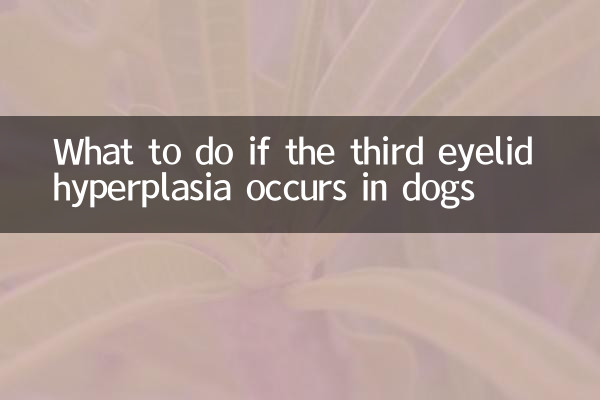What should I do if my dog’s third eyelid grows? Analysis of hot topics on the Internet in the past 10 days
Recently, pet health issues have become a hot topic on social media and forums, especially discussions about third eyelid hyperplasia in dogs. Many pet owners are concerned about this and are looking for solutions. This article will combine the hot content on the Internet in the past 10 days to provide you with a detailed analysis of the causes, symptoms and countermeasures of third eyelid hyperplasia in dogs.
1. What is third eyelid hyperplasia?

The third eyelid, also known as the nictitating membrane, is a protective membrane on the inside of your dog's eye. When this membrane becomes red, swollen, hyperplasia, or everts, it may cause discomfort and even affect vision. The following are the core issues that netizens have been paying attention to in the past 10 days:
| keywords | Search volume (last 10 days) | Main discussion platform |
|---|---|---|
| Dog third eyelid hyperplasia | 12,500+ | Xiaohongshu, Zhihu |
| Third eyelid redness and swelling | 8,300+ | Baidu Tieba, Douyin |
| dog eye inflammation | 15,200+ | Weibo, Bilibili |
2. Common symptoms of third eyelid hyperplasia
According to veterinarians and pet bloggers, the following are typical signs of third eyelid hyperplasia in dogs:
| Symptoms | frequency of occurrence | Urgency |
|---|---|---|
| red or bloodshot eyes | high | Need to be checked in time |
| Ectropion or swelling of the nictitating membrane | Middle to high | It is recommended to seek medical treatment |
| Increased discharge (purulent or mucus) | in | Need cleaning and care |
3. Possible cause analysis
Based on pet hospital cases and feedback from netizens, common causes of third eyelid hyperplasia include:
4. How to treat and care for it?
The following are effective suggestions from popular discussions in the past 10 days:
| method | Applicable situations | Things to note |
|---|---|---|
| antibiotic eye drops | bacterial infection | Veterinary guidance required |
| Surgical removal (in severe cases) | Repeated hyperplasia | Choose a professional hospital |
| saline cleansing | Mild redness and swelling | Avoid direct contact with eyeballs |
5. Preventive measures
According to the experience shared by pet bloggers, daily prevention is the key:
6. Summary
Although third eyelid hyperplasia in dogs is common, timely intervention can prevent it from getting worse. If symptoms persist or worsen, be sure to consult a professional veterinarian. The recent heated discussion among netizens also reminds us that scientifically raising pets requires more knowledge reserves and careful observation.
(Note: The above data statistics are based on the past 10 days, and the sources include social media, forums and search engines.)

check the details

check the details